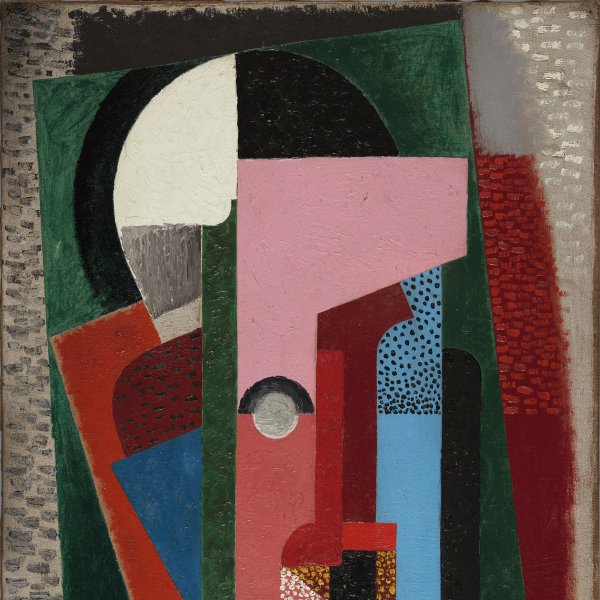Auguste Herbin
Quiévy, 1882-Paris, 1960
An artist associated with Cubism, the French painter Auguste Herbin made a firm stand in favour of non-figurative art from 1917 onwards, becoming an influential figure for French artists of the second half of the twentieth century.
Herbin studied drawing at the Lille École des Beaux-Arts from 1898 to 1901 and later took up residence in Paris at a time when his works were influenced by the Impressionist and Post-Impressionist movements. In 1909 he went to live in the Bateau-Lavoir, where he met Pablo Picasso, Georges Braque and Juan Gris, who steered him towards the Cubist language he would soon adopt. In 1910 he exhibited at the Salon des Indépendants in the same room as Albert Gleizes and Fernand Léger and his work was included in the Salon de la Section d’Or of 1912.
Herbin’s first fully abstract works date from 1917. After the First World War he exhibited regularly at Léonce Rosenberg’s Galerie de l’Effort Moderne and started on a series of painted wooden reliefs. So poor was their critical reception that Rosenberg recommended his return to figuration, and he heeded this advice for a brief period during the 1920s. Despite pressure from the Communist Party, of which he was a member, to place his art at the service of the political cause he supported, Herbin continued to be a firm advocate of non-figurative art until the end of his days. In 1931 he established the Abstraction-Création group together with Georges Vantongerloo and in 1949 published L’Art non-figuratif, non-objectif expounding his theory of colour and the correspondences between writing, music and the visual arts. In the 1950s he started up the Salon des Réalités Nouvelles, of which he was director until 1955.
Herbin studied drawing at the Lille École des Beaux-Arts from 1898 to 1901 and later took up residence in Paris at a time when his works were influenced by the Impressionist and Post-Impressionist movements. In 1909 he went to live in the Bateau-Lavoir, where he met Pablo Picasso, Georges Braque and Juan Gris, who steered him towards the Cubist language he would soon adopt. In 1910 he exhibited at the Salon des Indépendants in the same room as Albert Gleizes and Fernand Léger and his work was included in the Salon de la Section d’Or of 1912.
Herbin’s first fully abstract works date from 1917. After the First World War he exhibited regularly at Léonce Rosenberg’s Galerie de l’Effort Moderne and started on a series of painted wooden reliefs. So poor was their critical reception that Rosenberg recommended his return to figuration, and he heeded this advice for a brief period during the 1920s. Despite pressure from the Communist Party, of which he was a member, to place his art at the service of the political cause he supported, Herbin continued to be a firm advocate of non-figurative art until the end of his days. In 1931 he established the Abstraction-Création group together with Georges Vantongerloo and in 1949 published L’Art non-figuratif, non-objectif expounding his theory of colour and the correspondences between writing, music and the visual arts. In the 1950s he started up the Salon des Réalités Nouvelles, of which he was director until 1955.





